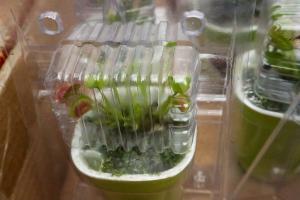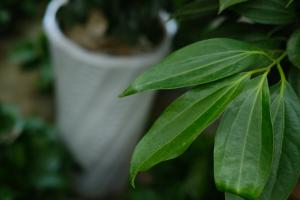Can Cover Plants for 2 Weeks without Water
Plants require water to survive, but what happens when you need to leave them unattended for a period of time? Thankfully, there are options available to help prevent plants from drying out during short absences. One such option is a plant cover that can help extend the time between watering.
What are Plant Covers?
Plant covers are designed to protect plants from harsh weather conditions and pests. They can come in various materials like plastic, breathable fabric, or paper. However, some plant covers are also designed to retain moisture, which is especially important for plants that need consistent watering.
Types of Plant Covers
There are different types of plant covers available in the market, and each has different features that cater to the specific needs of plants. Some of the most common plant covers include:
Plastic covers: These are the most affordable and readily available type of plant covers. They are designed to help plants retain moisture by trapping humidity inside.
Greenhouse covers: These are more expensive than plastic covers, but they are also more durable. Greenhouse covers help protect plants from pests, wind, and extreme weather conditions.
Shade cloth covers: These covers are designed to protect plants from intense sunlight exposure. They help reduce the amount of sunlight that reaches the plants while allowing enough light to promote healthy growth.
How to Use a Plant Cover
Using a plant cover is simple. Cover the entire plant, making sure that it has enough room to breathe. Be sure to avoid covering the plant too tightly to prevent heat buildup or suffocation. The cover should also be snugly fit on the pot or container to prevent moisture from escaping.
Benefits of Plant Covers
Plant covers offer several benefits. They help extend the time between watering, which is especially important during short absences when it is difficult to ensure that plants receive adequate water.
Besides water retention, plant covers also provide protection from harsh weather conditions like frost, hail, and strong winds. They also help prevent pests and insects from preying on plants.
Conclusion
While it's always best to water plants regularly, plant covers can be an effective solution for those moments when you need to leave your plants for a few days. Remember to select the right type of cover that caters to your plant's specific needs and ensure that the cover fits snugly on the pot or container to prevent moisture loss.

 how many times do yo...
how many times do yo... how many planted tre...
how many planted tre... how many pine trees ...
how many pine trees ... how many pecan trees...
how many pecan trees... how many plants comp...
how many plants comp... how many plants can ...
how many plants can ... how many plants and ...
how many plants and ... how many pepper plan...
how many pepper plan...































